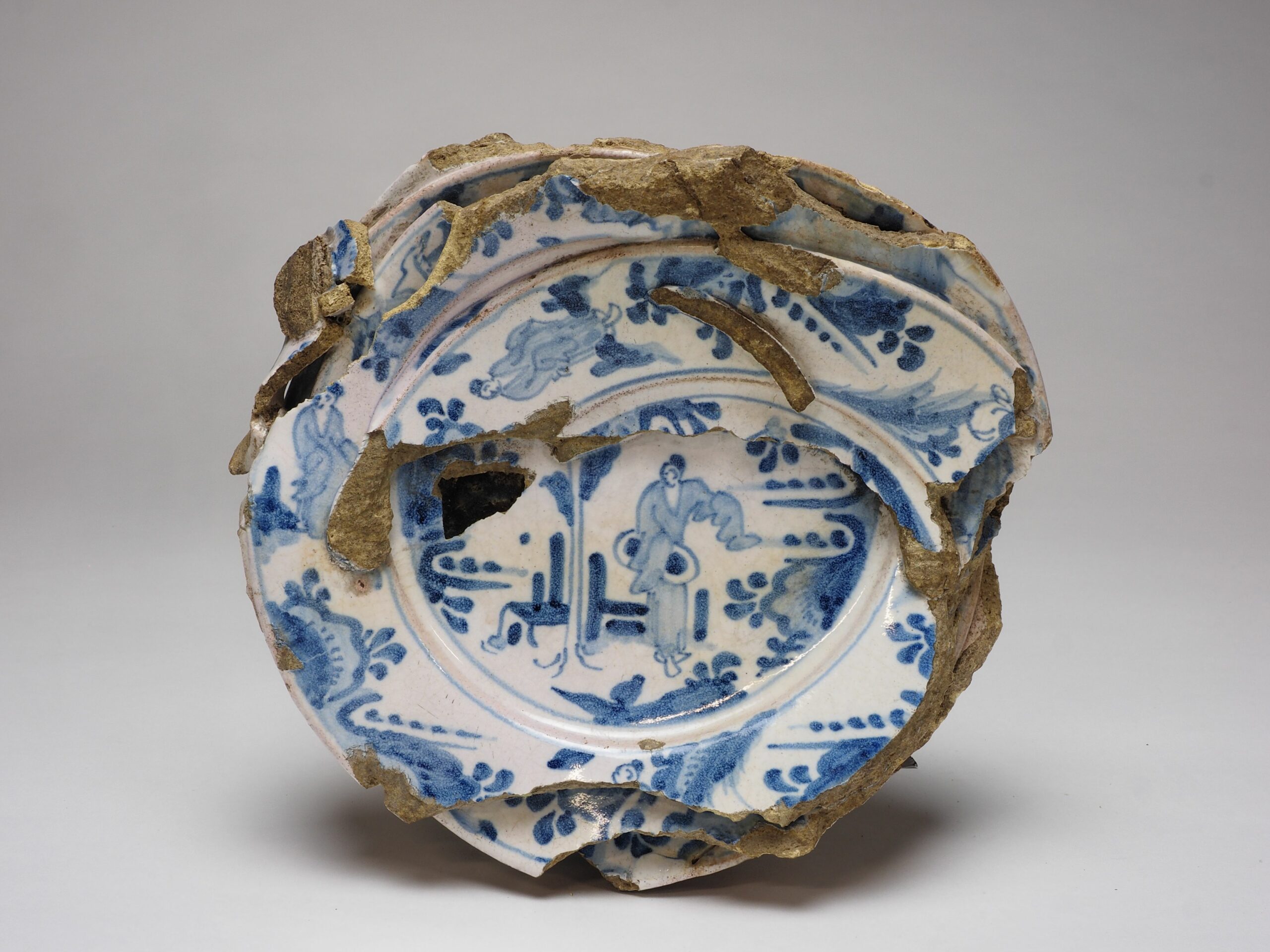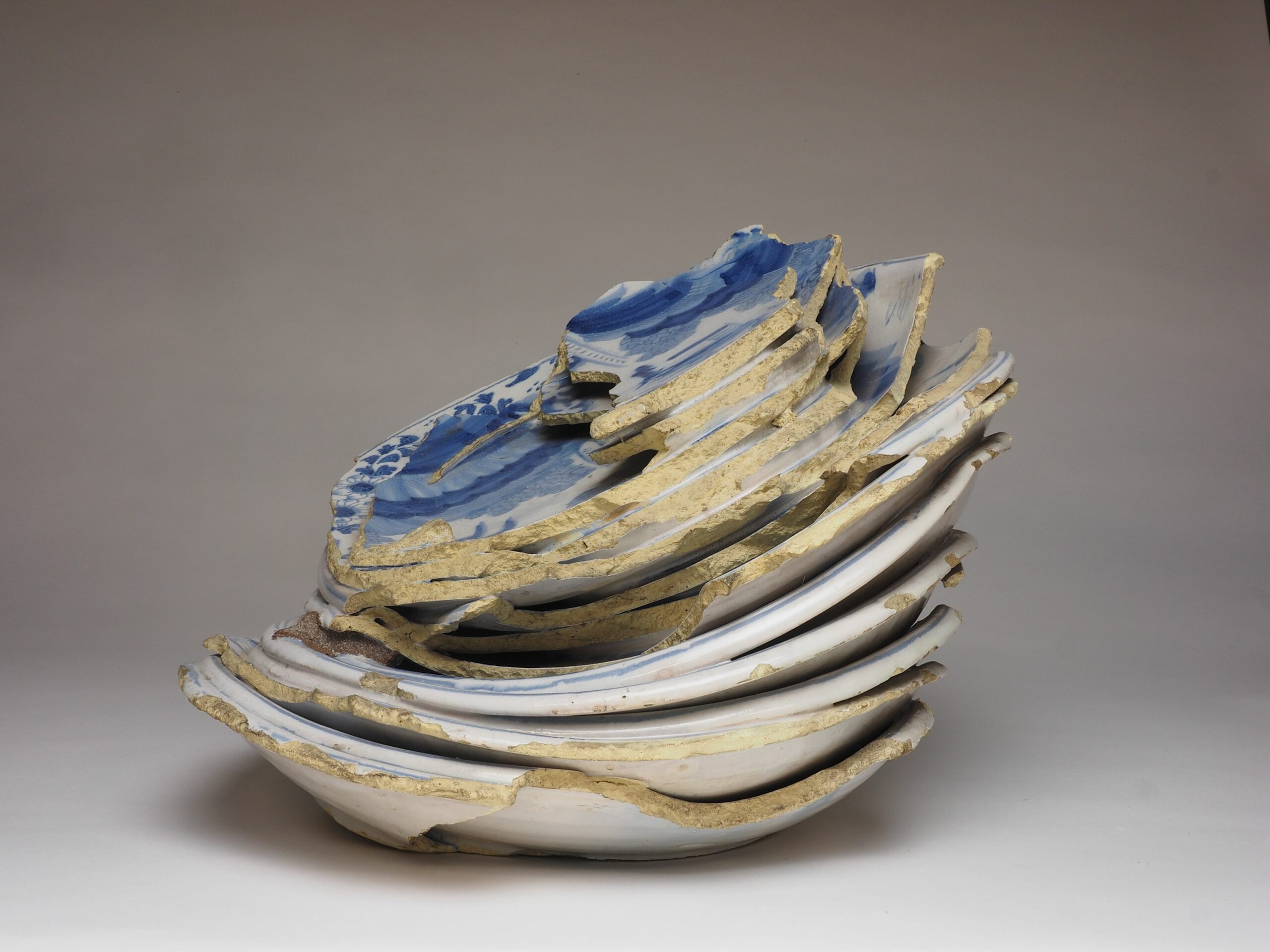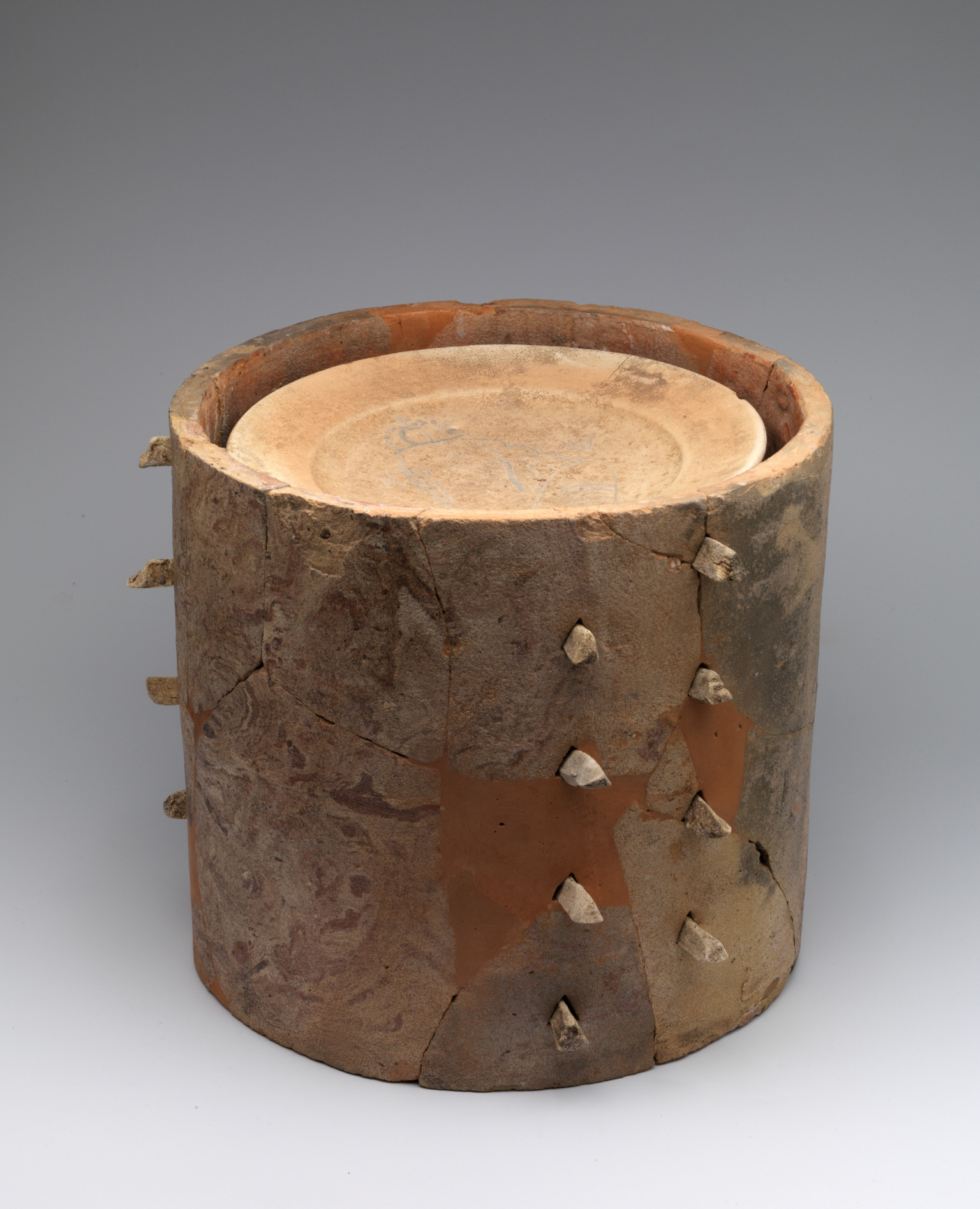
Pottery rejects with a view
Besides the superb pieces of Delft earthenware on display in various museums and held by passionate private collectors, there are also items that will almost never find pride of place in a showcase or exhibition. We’re talking about broken, incomplete or failed pieces that have been discovered in the ground, for instance during archaeological excavations. Nonetheless, these earthenware items too can sometimes tell fascinating stories.

The unique thing about the collection at Museum Prinsenhof Delft is not only the set of flower vases or the tile of Mary Stuart II’s Water Gallery, but also its relationship with the city of Delft. Because an important part of the story of Delft earthenware is (still) below ground. Bit by bit, traces of the centuries-old pottery industry are emerging and researchers are discovering ever more about how the famous tin-glazed pottery was produced. And these production items are giving us an increasingly good idea of the size and diversity of ‘Delft Blue’.
As one example, we can examine two waster from the museum’s collection. Due to an excessively high temperature the saggar in which the dishes were fired was itself burned. This led to the whole stack collapsing and the dishes melting into each other, so to speak. All the separate dishes were fired as a single object, as if to create a unique work of art. But this also tells us something about the diversity of Delft earthenware. Because at the edges we can see that these stacks of plates comprise different models with various types of decoration.
In both stacks the uppermost plate features a landscape painted in a fairly flowing chinoiserie style. In other words, the decorations were inspired by paintings on Chinese porcelain. Both objects display Chinese figures. On one stack of dishes we see a Chinese man with traditional Chinese clothing that includes long sleeves. On the other we see two Chinese men with a large vase. The theme of a typical Chinese landscape was often used by the Delft pottery painters, and could be found in various compositions and qualities. Small bowls, cups, plaques, vases and large bowls were all produced with this theme. Moreover, the theme of the Chinese landscape was not confined to simpler plates such as the wasters shown here, as we see from a number of dishes in the collection of Aronson Antiquairs.

Museums now hold several unique finds from archaeological excavations or from earlier field investigations. Unfortunately, we no longer know precisely where most of these archaeological objects were discovered, because these finds were often donated by volunteers. According to a label the misfire was “found in a cesspit of the Delft earthenware factory 1911”. This probably refers to the pottery De Porceleyne Fles (1653), but we can’t be sure of this. Hopefully more archaeological objects of Delft earthenware will continue to appear in the future, which can tell us more about the superb ‘complete’ items that we still admire today.
Text by:
Suzanne Klüver, MA. Independent researcher.



